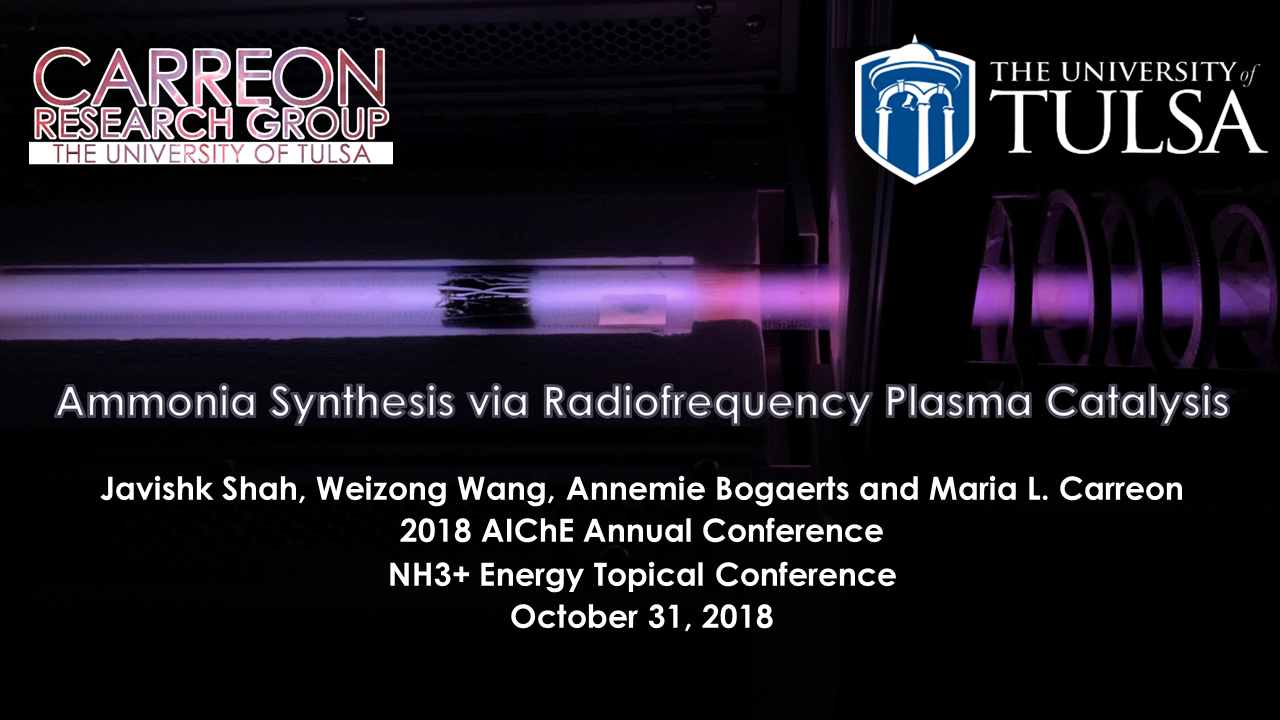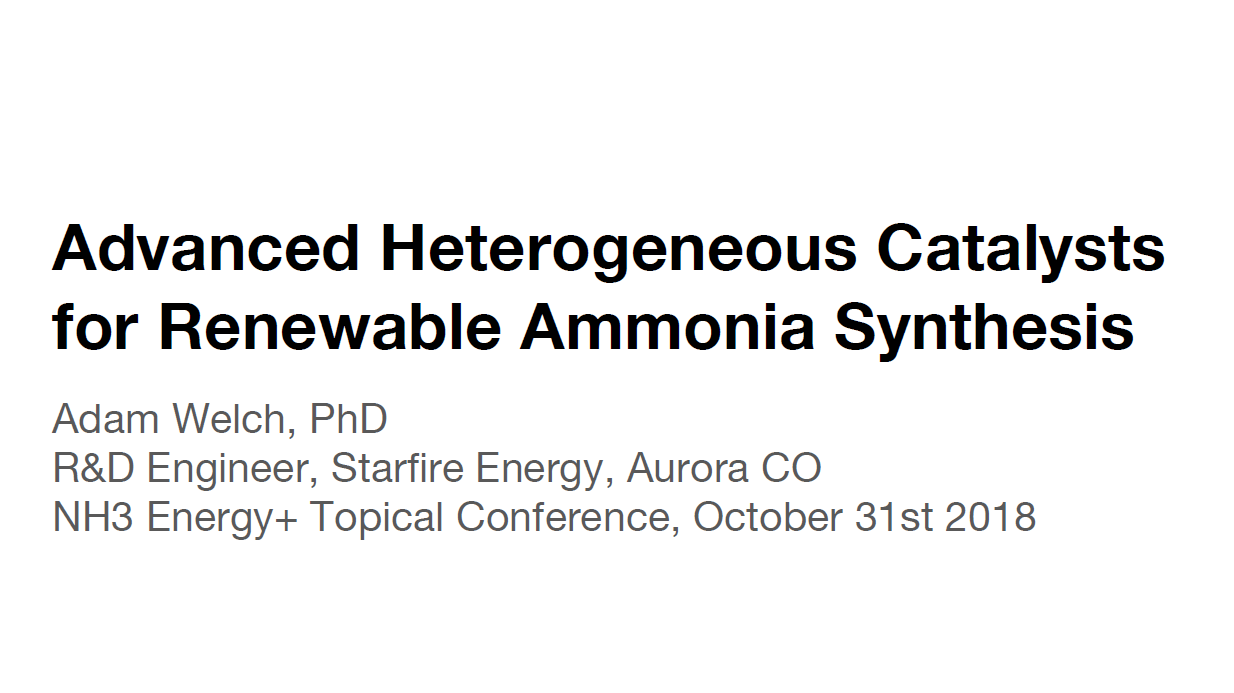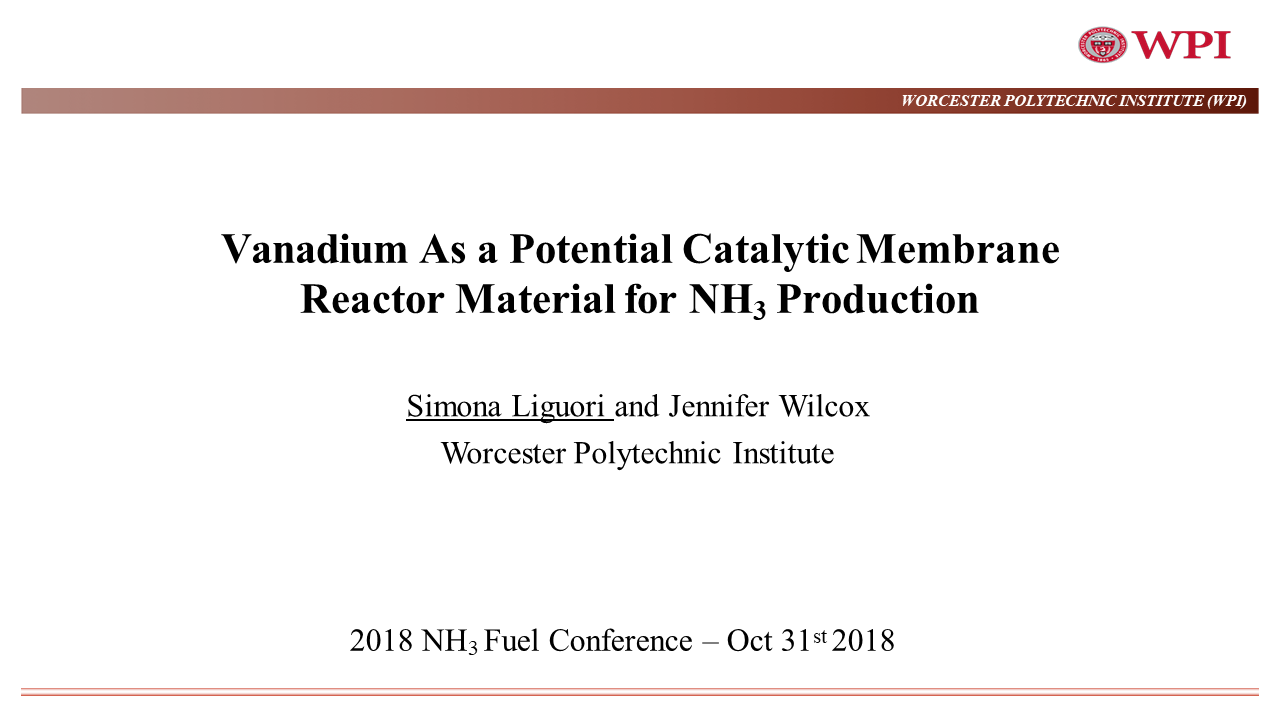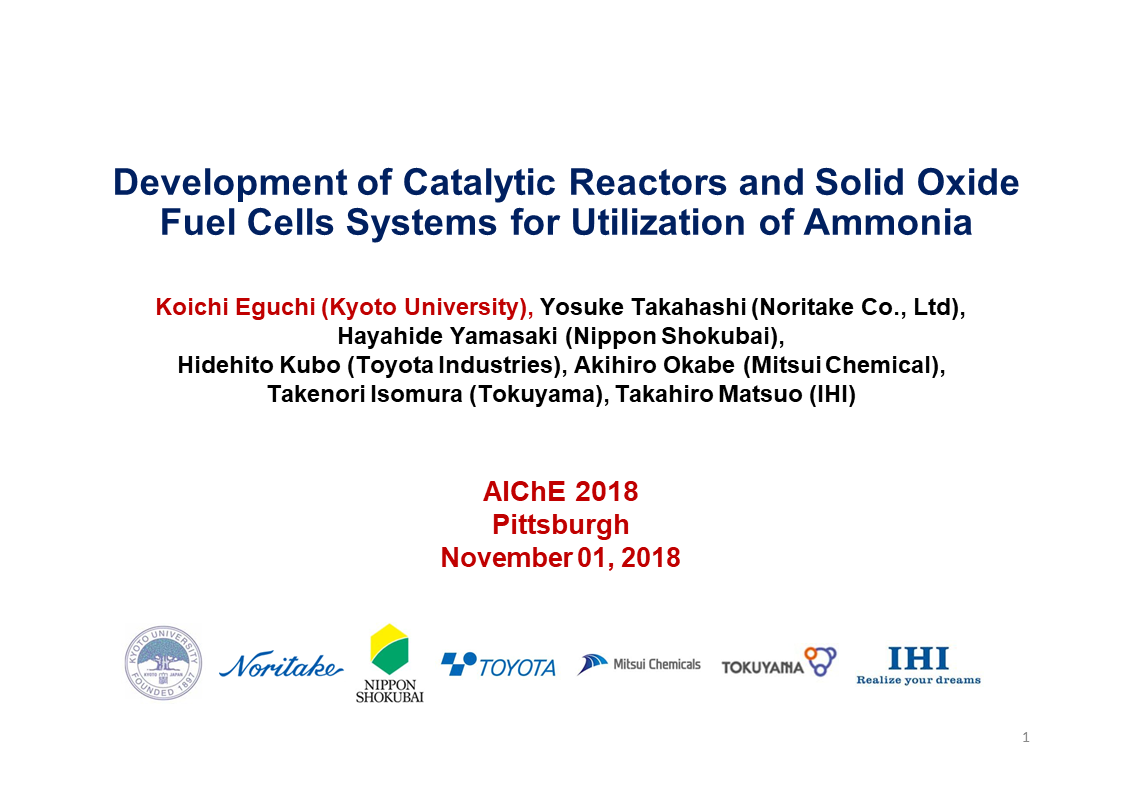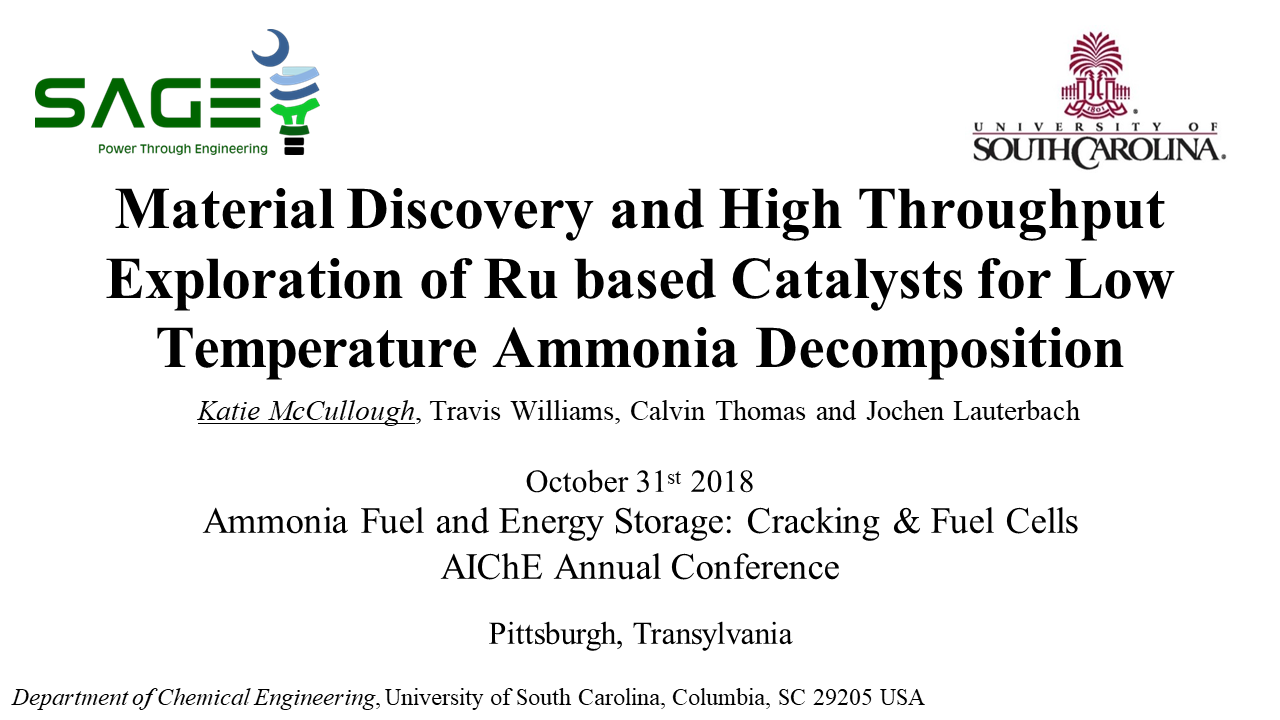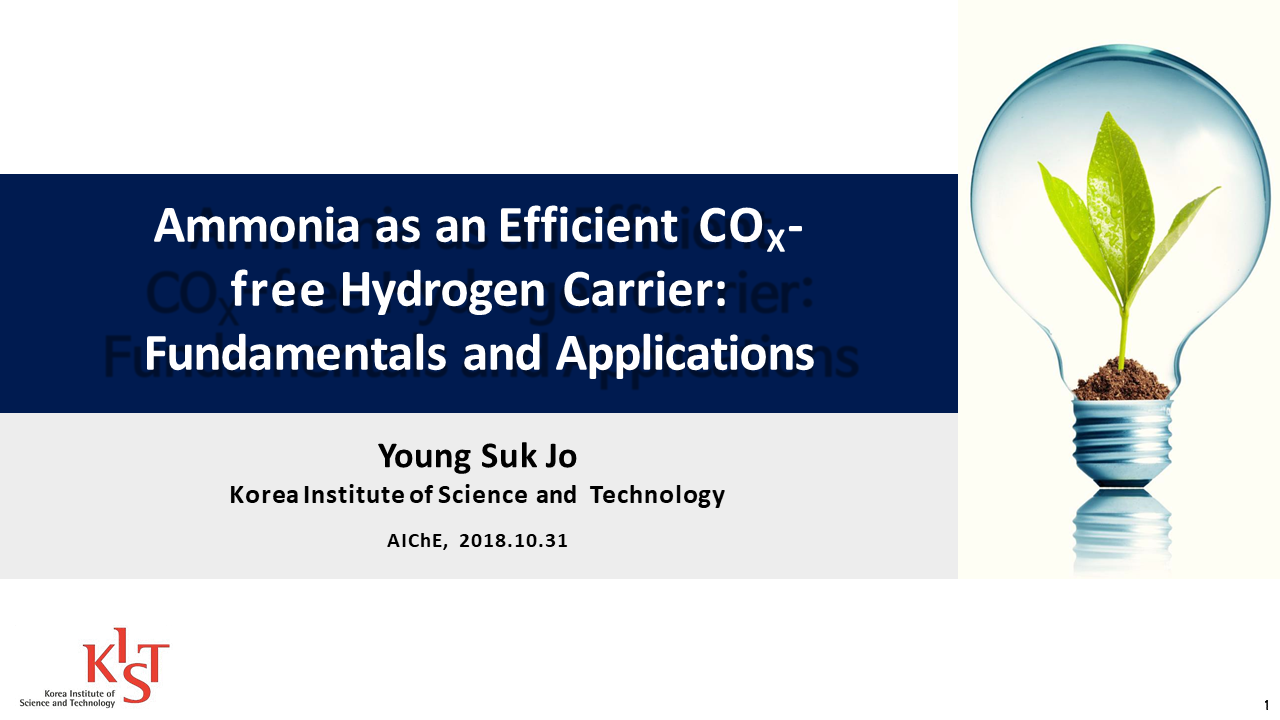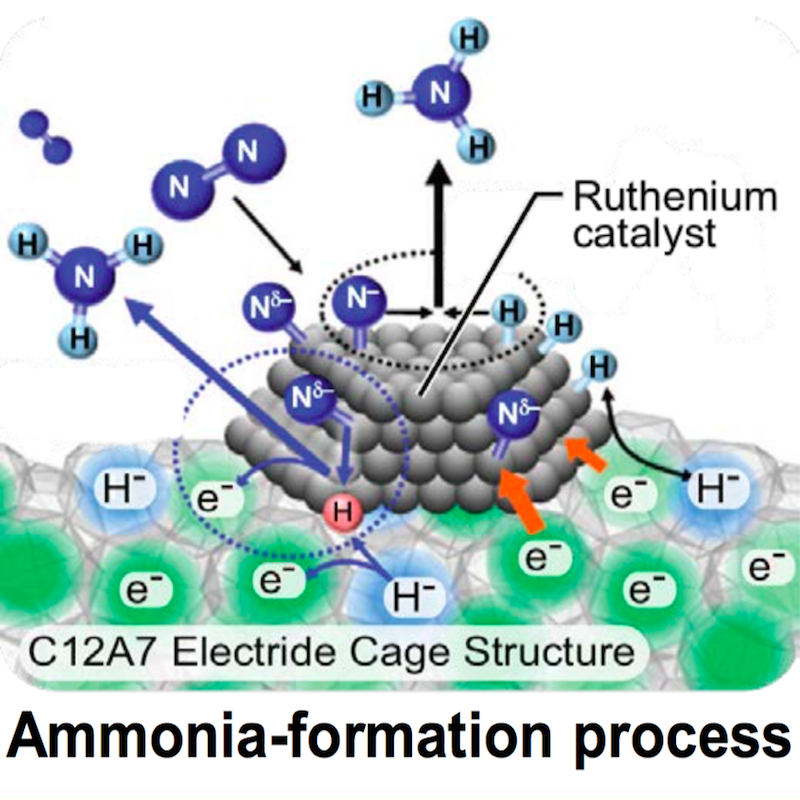Presentation
A Low Pressure Membrane Based Renewable Ammonia Synthesis
Ammonia is currently mostly produced by the highly energy and carbon-intensive Haber–Bosch process, which requires temperatures of 450–500 °C and pressures of up to 200 bar. The feedstock for this process is hydrogen from natural gas (NG), coal or oil, and nitrogen produced from air by cryogenic route or pressure swing adsorption (PSA). The share of NG, coal and fuel oil feedstock for the global production of ammonia is 72%, 22% and 4% respectively, contributing to approximately 420 million tons of CO2 emissions per annum, representing over 1% of global energy related emissions. The energy consumed for ammonia synthesis by…

